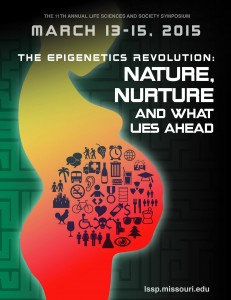Epigenetics involves changes in how your genes work.
In classical genetics, traits pass from generation to generation in DNA, the strands of genetic material that encode your genes. Scientists thought alterations to the DNA itself was the only way changes could pass on to subsequent generations.
So say you lost a thumb to a angry snapping turtle: Because your DNA hasn’t changed, your children won’t be born with smaller thumbs. Classic.
Things get way more complicated with epigenetics. It turns out that some inherited changes pass on even though they are not caused by direct changes to your DNA. When cells divide, epigenetic changes can show up in the new cells.
Getting nibbled on by an irate turtle isn’t likely to epigenetic changes, but other factors such as exposure to chemicals and an unhealthy diet, could cause generation-spanning epigenetic changes.
How does it work?
The main players in epigenetics are histones and methyl groups.
Imagine your genes are like pages in a really long book. Prior to the mid-1800s, books came with uncut edges, so in order to read the book, you’d have to slice apart the uncut pages. That’s sort of what a histone does to DNA: They are proteins that wrap DNA around themselves like thread on a spool. They keep the DNA organized and help regulate genes.
Methyl groups (variations on CH3) attach to the histones and tell them what to do. These molecules are like notes in a book’s margin that say, “These next few pages are boring, so don’t bother cutting them open.” As you read the book, you’ll save time and effort by skipping some sections even though those sections still exist. Or maybe the note will say, “This next section is awesome; you’ll want to read it twice.”
That’s epigenetics. Higher level cues that tell you whether or not to read a gene.
And when a scribe makes a copy of the book, they’ll not only copy all the words in the novel, but all the other stuff, too: the stuck-together pages and the margin notes.
What about my health?
Many areas of health — including cancer, autoimmune disease, mental illness and diabetes — connect with epigenetic change.
For example, scientists link epigenetic changes to neurons to depression, drug addiction and schizophrenia. And environmental toxins — such as some metals and pesticides — can cause multigenerational epigenetic effects, according to research. Once scientists and doctors decipher those processes work, they will be better equipped to treat the sick and be able to take preventative measures to help insure our health and the health of our kids.
Is it epigenetics or epigenomics?
Confusing, I know.
As we learned from the first question, epigenetics is “the study of heritable changes in gene function that do not involve changes in the DNA sequence,” according to my trusty Merriam-Webster.
Epigenomics is the study and analysis of such changes to many genes in a whole cell or organism. It’s comparable to the difference between genetics (dealing with particular pieces of DNA, usually a gene) and genomics (involving the whole genetic shebang).
Where can I learn more?
Start at this year’s Life Sciences and Society Program Symposium, “The Epigenetics Revolution: Nature, Nurture and What Lies Ahead,” on March 13-15, 2015. Speakers from all over the country will delve into the puzzles and possibilities of epigenetics.
For more background, Nature magazine also created this supplement on epigenetics.


